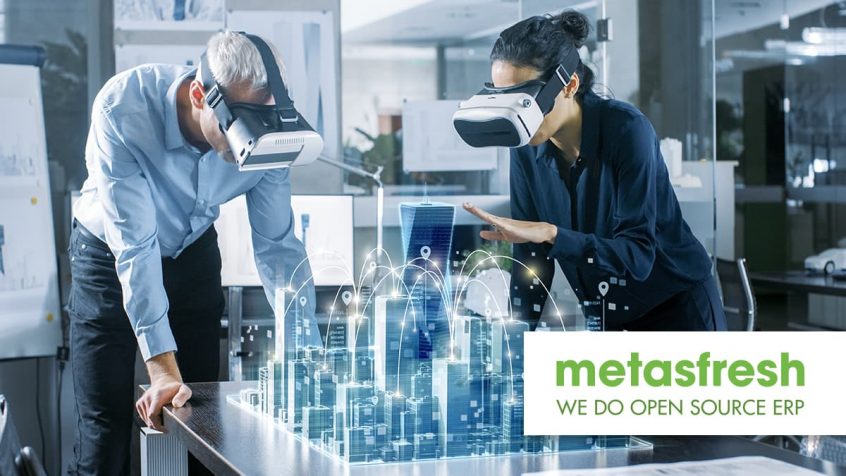Share this Post
The line between the digital and physical worlds is fading fast. Already, we’ve seen doctors perform remote surgical operations, field service and maintenance technicians pulling up augmented reality (AR) schematics to help them diagnose and fix faulty machines, and millions of gamers worldwide using their smartphones to chase digitally-generated monsters around their real-life towns and neighbourhoods.
These are just a few examples of the emerging world of the Spatial Web — the twinning and merging of real and virtual realities that will, many believe, eventually eliminate the boundary between the two almost entirely.
As a result of a series of converging technologies — 5G global networks, geolocation, connected devices and sensors (the Internet of Things, or IoT), artificial intelligence (AI) and machine learning (ML) technology — over the coming decade, the world around us will come to life with layer upon layer of rich, engaging, dynamic data that we can see and interact with, transforming everything from manufacturing to education, entertainment, sales, marketing and retail.
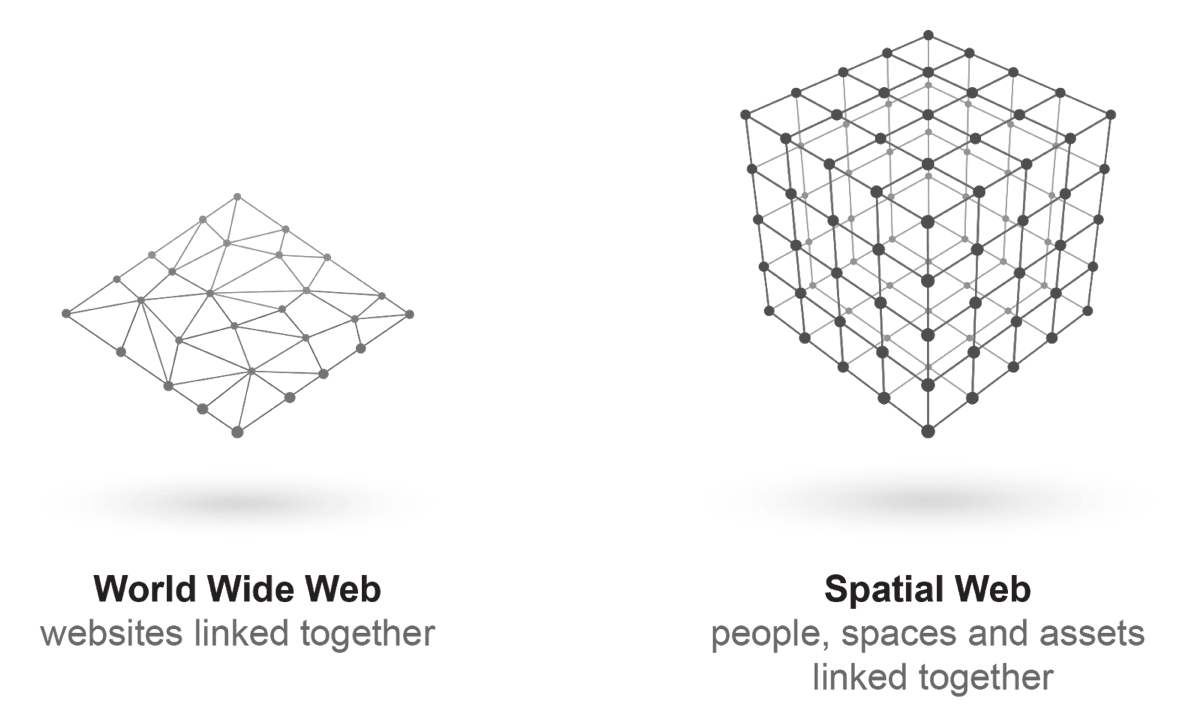
The Spatial Web is a new multidimensional network —Source: medium.com
What Is the Spatial Web?
The Spatial Web — also known as Web 3.0 — is the next evolution of IT technology. Whereas Web 1.0 in the 1990s was a largely static content delivery network with little user interaction taking place, Web 2.0 brought us interactive web applications, multimedia content, and, of course, social media — democratising content creation, participation, information sharing, and giving businesses worldwide access to billions of potential customers.
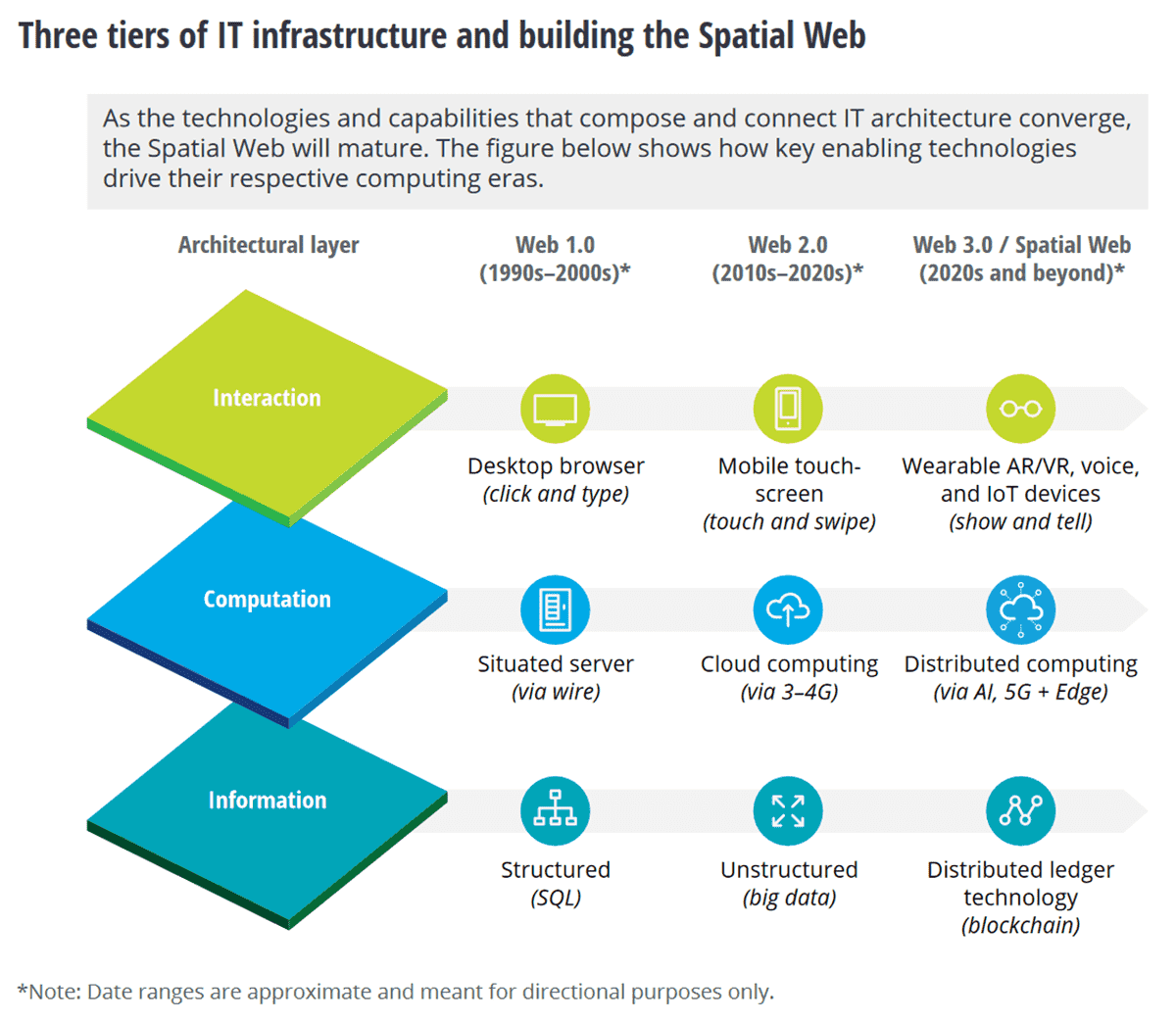
Building the Spatial Web —Source: deloitte.com
Both previous iterations of the World Wide Web, however, simply link websites together two-dimensionally. Where Web 3.0 takes a giant step forward is in the fact that it connects not just websites, but real, physical things — devices, objects and people — in real, physical, three-dimensional space (hence “Spatial Web”).
As Peter H. Diamandis, Founder and Executive Chairman at XPRIZE, puts it, “The Spatial Web will enable us to both build a twin of our physical reality in the virtual realm and bring the digital into our real environments. […] Geared with natural language search, data mining, machine learning, and AI recommendation agents, the Spatial Web is a growing expanse of services and information, navigable with the use of ever-more-sophisticated AI assistants and revolutionary new interfaces.”
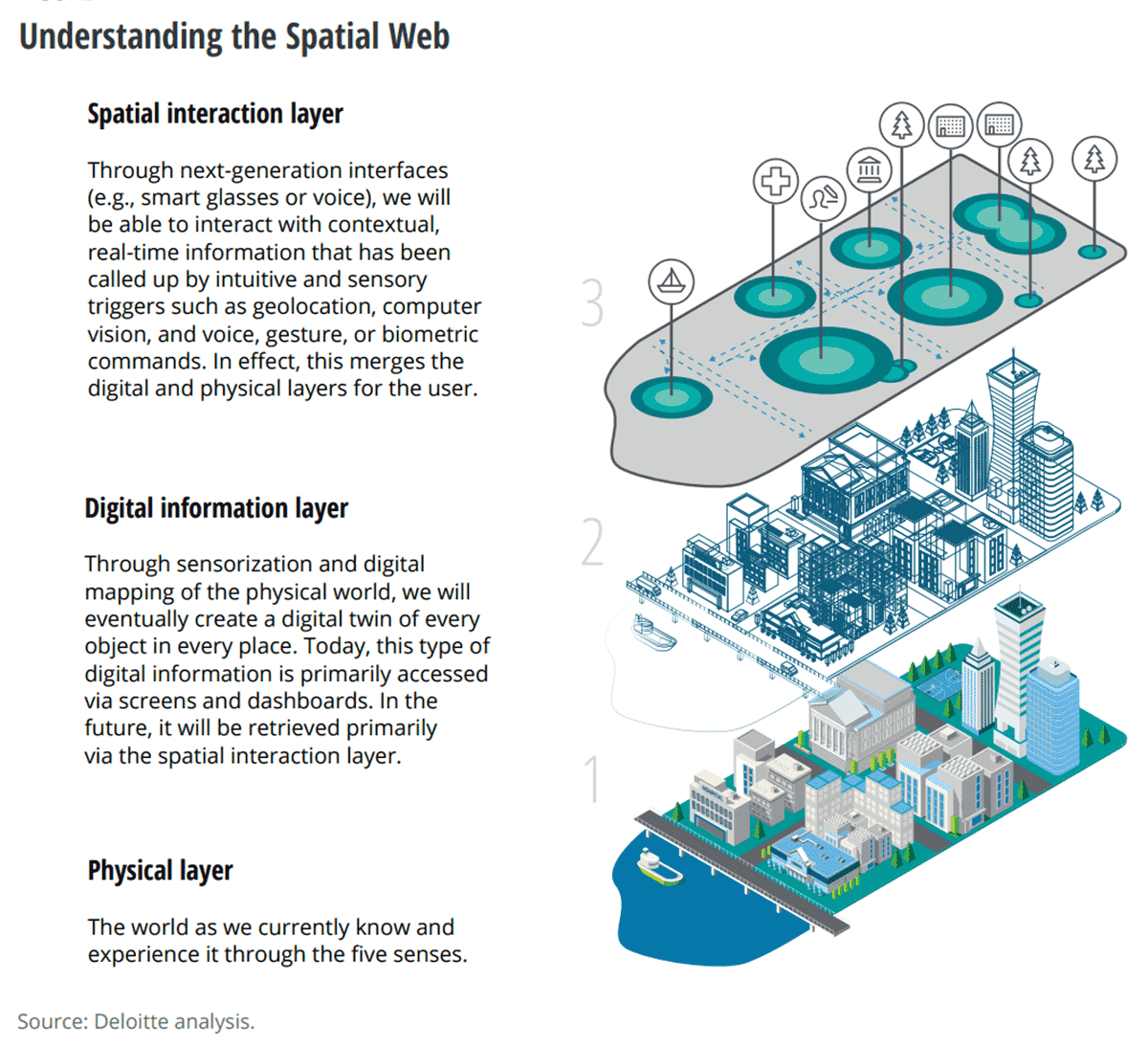
Understanding the Spatial Web —Source: deloitte.com
A Convergence of Enabling Spatial Web Technologies
As Deloitte observes in its recent report, The Spatial Web and Web 3.0: What Business Leaders Should Know About the Next Era of Computing, the primary gateway for humans — i.e. consumers — to access the Spatial Web will be via AR/VR devices. Today, that largely means smartphones, but soon will include things like AR glasses, digital contact lenses, haptic wearables, and more.
The report notes that while business leaders may get the impression that the Web 3.0 evolution is too far off to warrant attention, the “magical future” may arrive sooner than expected. Significant investments have occurred in recent years by the likes of Google, Facebook and Apple, all striving to develop, evolve and significantly reduce both the size and the cost of AR hardware, and support developers in building AR apps and solutions.
Apple, for instance, last year announced ARKit 4 — the latest version of its AR development toolkit, introducing, amongst other things, location anchors, scene geometry, and a new Depth API that provides detailed information about the topography of the physical environment. These innovations allow ARKit developers to utilise the capabilities of the latest LiDAR hardware in new iPhones. Google’s competing technology ARCore is making similar strides for Android developers. There are now more than a billion devices supporting ARKit applications (and 950 million active users of them), and 633 million ARCore devices (with a 122 million active users).
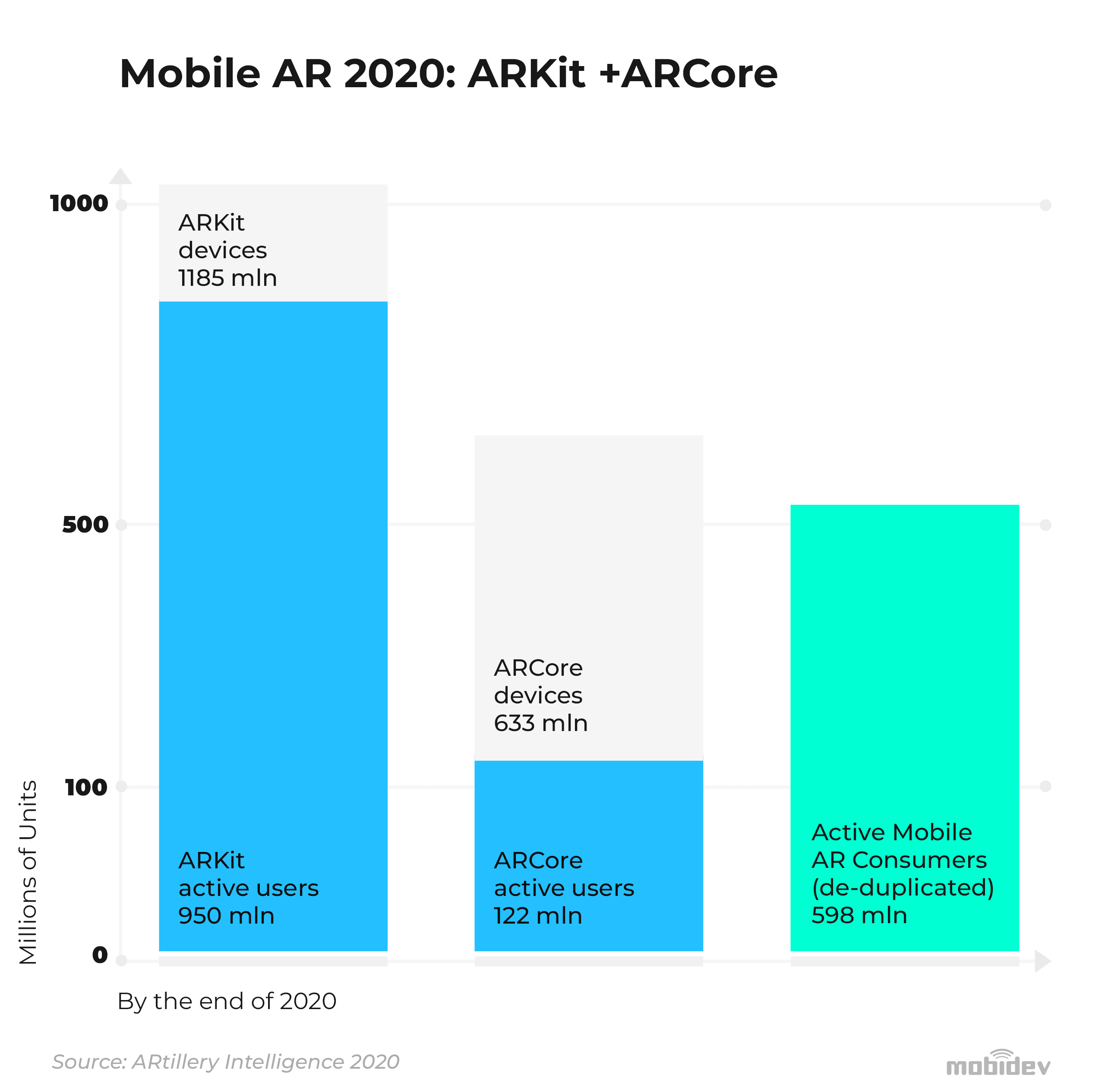
Mobile AR: Apple ARKit 4, Google ARCore —Source: mobidev.biz
Meanwhile, there are upward trends in innovation and the development of technologies supporting the spatial interaction layer across the broader tech industry — the number of AR-related patents published yearly grew more than threefold over the last ten years, for example, according to Deloitte.
At the Computation layer — i.e., the logic that enables the interaction (cloud, edge computing, AI/ML, computer vision, natural language processing, etc.) — a high level of investment has also been witnessed in recent years, as have innovations in things like blockchain, sensors and geolocation technologies at the Information layer.
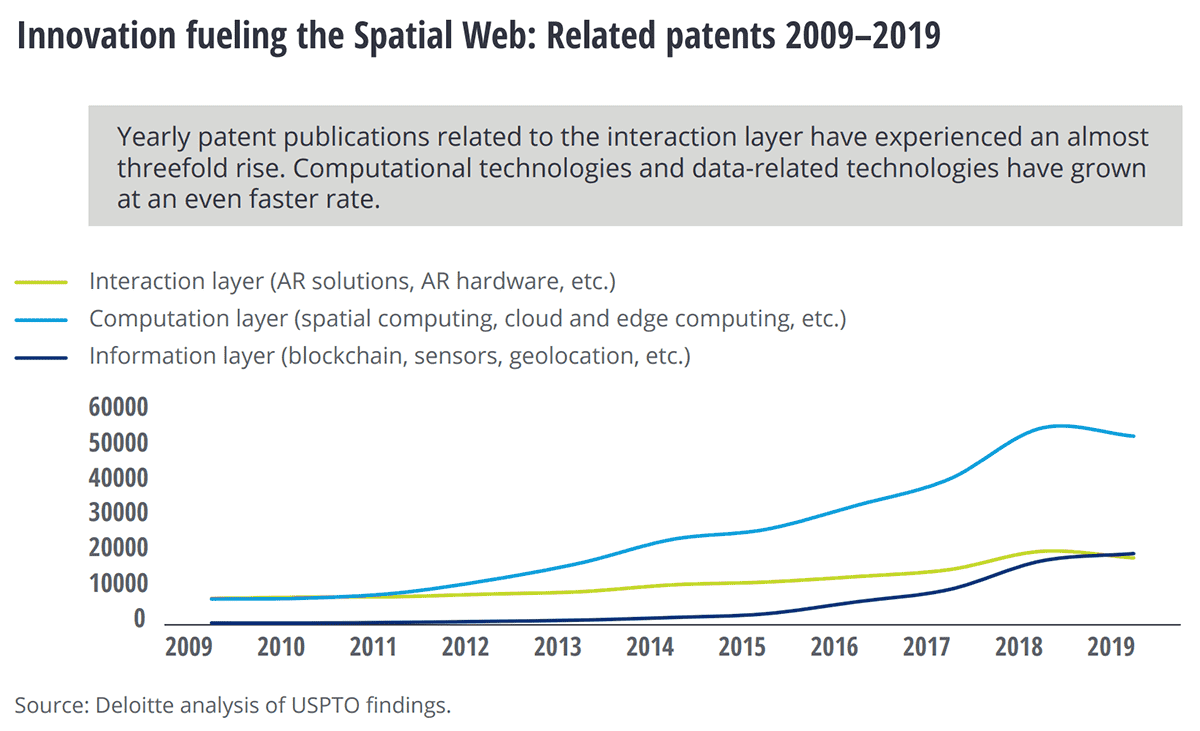
Spatial Web technologies have shown clear growth over the last decade —Source: deloitte.com
How the Spatial Web Will Transform Product Presentation
As these enabling technologies across all three tiers come to fruition to support and realise the Spatial Web, a new standard for product presentation emerges. Already, AR is penetrating shopping and retail, giving consumers a “try-before-you-buy” experience from the comfort of their own homes.
Retailers such as IKEA provide AR apps that allow customers to see what furniture and other products will look like in their sitting rooms, kitchens and bathrooms. Others, such as Macy’s Adidas, ASOS, and Modcloth are experimenting with virtual fitting room technology to allow customers to virtually “try on” clothing before buying it online. This innovation in particular has been important for many retailers throughout the COVID-19 pandemic as a solution for customers who cannot physically visit a store — and has grown in popularity as a result. The global virtual fitting room market is now projected to reach USD 10 billion by 2027 at a CAGR of 20.1% over the forecast period.
Elsewhere, AR apps are being developed for use in-store to pull up product information — while geolocation sensors ping offers and notifications to consumers’ phones, and smart shelf displays illuminate to guide them to items on their shopping lists. AR is also being utilised to help customers navigate their way through stores, shopping malls, airports and other locations.
Most of these innovations are being welcomed by consumers. Indeed, the 2020 IBM Retail Index highlights that most consumers have already tried or would like to try emerging Web 3.0 retail technologies, including smart dressing rooms and virtual reality.
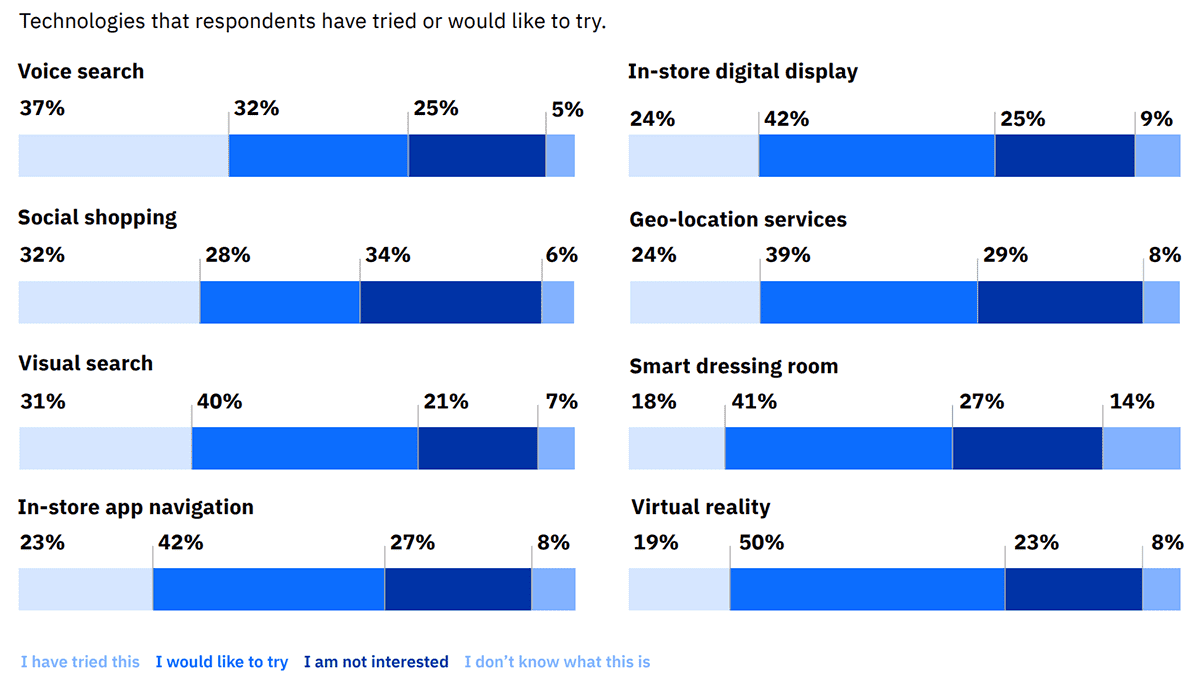
Consumers are keen on experimenting with the latest tools —Source: ibm.com
The benefits of virtual product presentation are numerous. In many sales processes — particularly when it comes to ecommerce — the difference between what a customer expects and what they actually receive can be a serious problem. Often, consumers feel as though they ordered one thing, but ended up with another — a situation that leads to poor customer satisfaction and more returns.
AR and VR technologies can significantly mitigate this problem — giving customers the ability to see, hear and interact with the product prior to purchase by anchoring a digital facsimile of it over physical objects (including themselves). Such innovations are useful for everything from remote product demos to company trade shows — where it is impossible to showcase every single product physically, or where certain products (such as automobiles or furniture) may be too big to display.
Indeed, the reach of such trade events can be significantly increased through Web 3.0. Even when travel and social distancing restrictions are lifted, there will always be potential leads and customers who cannot participate in a physical event for a variety of reasons. However, with no space and time restrictions, virtual events can be hugely successful — combining increased reach with rich, meaningful interaction.
Final Thoughts
Though the full realisation of the Spatial Web may still be a few years away, it is nonetheless fast approaching — particularly as development toolkits like ARKit and ARCore continue to lower the barrier to entry and more and more retailers experiment with AR experiences and virtual product presentation. As Deloitte emphasises, “Most businesses aren’t going to build their own Spatial Web; they will participate in it as it becomes the next major era in computing, analogous to how Web 2.0 capabilities have driven new mobile behaviours and ways of working. […] There are important actions to be taken today to prepare for, benefit from, and shape this new era as it unfolds.”
Importantly, for those planning to or already experimenting with Spatial Web technologies, having a system to store, manage, analyse and centralise data is crucial — be it from in-store sensors, digital twins of warehouses, fulfilment centres, manufacturing lines or brick-and-mortar stores, or virtual product presentations and the sales and marketing data they generate.
As such, in order to be successful, Spatial Web technologies will require robust integration with a centralised business management system such as metasfresh ERP. metasfresh serves as the single source of truth for all business data, no matter where it comes from — forming the flexible foundation upon which retailers can integrate more and more cutting-edge Web 3.0 technologies to advance their digital maturity and drive transformation.
Talk to us here at metasfresh about your Spatial Web 3.0 strategy. metasfresh is a member of the Ecommerce and Cross-Channel Club Cologne (ECC Club Köln), which is managed by the Institute for Retail Research Cologne (Institut für Handelsforschung, IFH Köln). The Institute offers individual research projects with strategic consulting. It specialises in the areas of inter-company comparisons as a controlling instrument, enabling retail companies to recognise market developments, measure changes in customer behaviour, optimise sales and set the course for a successful future. The insights and knowledge provided by the Institute through market research and studies relating to cross-channel and online retail are incorporated in the development of metasfresh, meaning all of our users are always up to date on the latest ecommerce developments.
At metasfresh, our mission is to enable each and every company to access a powerful ERP system that supports digital transformation and fuels corporate growth. Get in touch today for more information and insights.
Share this Post



